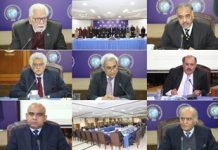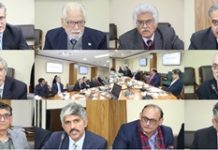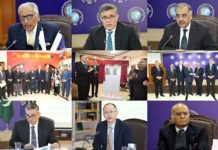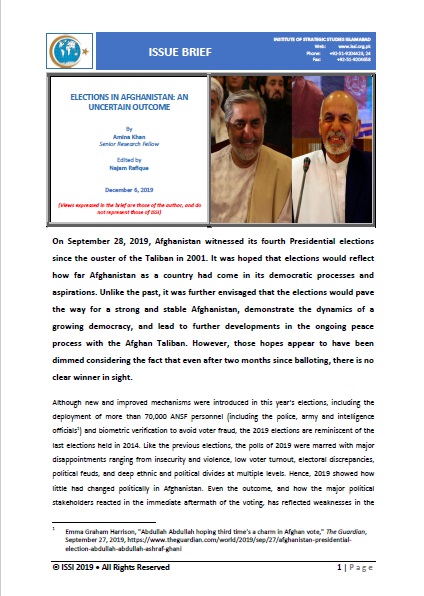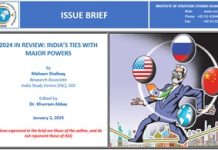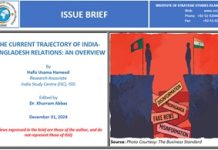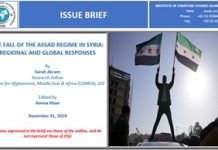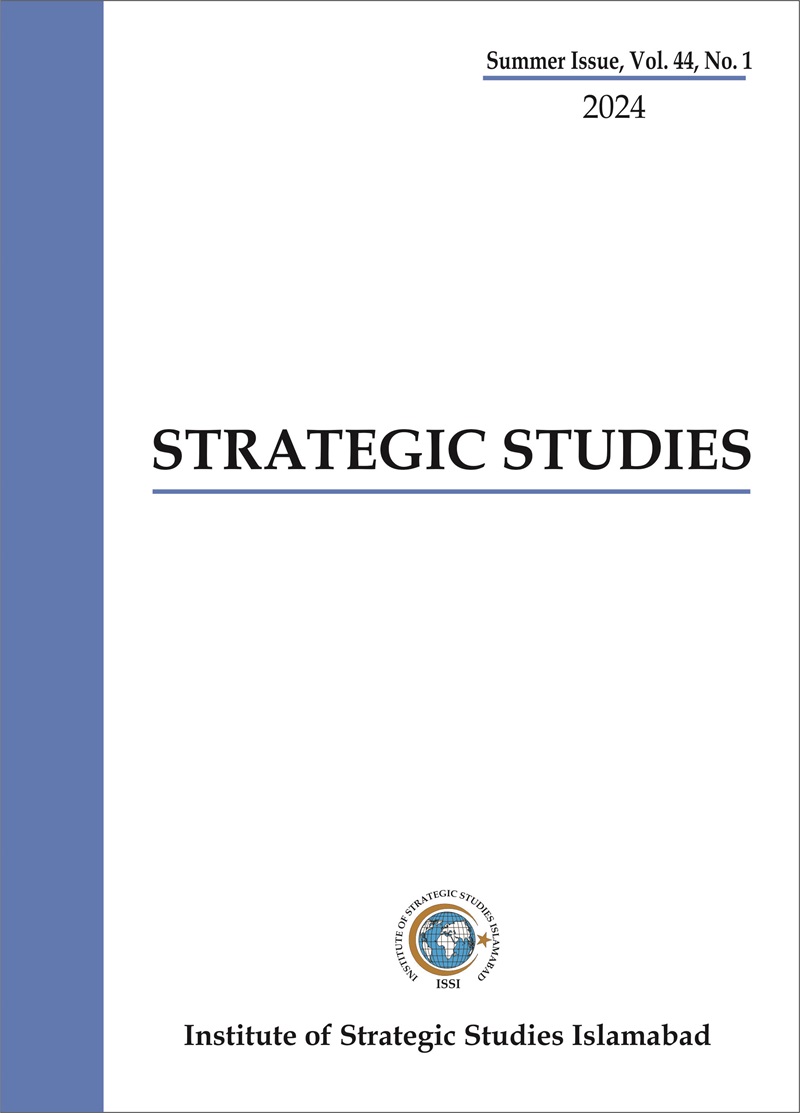On September 28, 2019, Afghanistan witnessed its fourth Presidential elections since the ouster of the Taliban in 2001. It was hoped that elections would reflect how far Afghanistan as a country had come in its democratic processes and aspirations. Unlike the past, it was further envisaged that the elections would pave the way for a strong and stable Afghanistan, demonstrate the dynamics of a growing democracy, and lead to further developments in the ongoing peace process with the Afghan Taliban. However, those hopes appear to have been dimmed considering the fact that even after two months since balloting, there is no clear winner in sight.
Although new and improved mechanisms were introduced in this year’s elections, including the deployment of more than 70,000 ANSF personnel (including the police, army and intelligence officials[1]) and biometric verification to avoid voter fraud, the 2019 elections are reminiscent of the last elections held in 2014. Like the previous elections, the polls of 2019 were marred with major disappointments ranging from insecurity and violence, low voter turnout, electoral discrepancies, political feuds, and deep ethnic and political divides at multiple levels. Hence, 2019 showed how little had changed politically in Afghanistan. Even the outcome, and how the major political stakeholders reacted in the immediate aftermath of the voting, has reflected weaknesses in the process. Even in the elections of 2014, majority of the candidates, especially frontrunner Abdullah Abdullah, raised legitimate concerns regarding the transparency of the election process.




